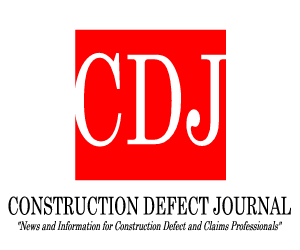The Supreme Court of Texas recently held a rare rehearing of a unanimous decision listening to arguments about whether it erred last year in ruling that a contract employee who suffered on-the-job injuries couldn’t sue the company that owns the work site. The court’s decision to revisit the case involving John Summers vs. Entergy Gulf States came after a bipartisan group of Texas lawmakers - along with labor groups and accident victims protested the original ruling, saying the Texas justices got it “flat-out got it wrong.” "It’s a reckless deregulation of Texas workplaces," said Craig McDonald, the director of Texas for Public Justice. "If this ruling is allowed to stand, there will be more accidents, more injuries and more deaths."Briefly, turbine mechanic John Summers was a contractor when he suffered back, shoulder and arm injuries in a 2001 accident while repairing a leak on a hydrogen generator at an Entergy Gulf States plant in Bridge City. He sued Entergy, a power provider with regulated utilities in Louisiana, Mississippi, Arkansas and Texas.The court said Entergy was immune from the lawsuit because Summers was covered by a workers’ compensation policy purchased by the company. The ruling extended immunity provisions to work site owners when such provisions had previously shielded only employers sued by their direct employees.The court’s decision also means that a “property owner could act as its own general contractor and could provide workers’ compensation coverage to its subcontractors’ employees,” said Lee Parsley, an attorney for Texans for Lawsuit Reform. “That decision was correct.” In arguing before the court Entergy attorney Jacqueline Stroh told the justices that “nothing warrants any consideration of this original opinion.”But Summers’ attorney Collyn Peddie argued the ruling rendered the term general contractor “meaningless and absurd,” and opened loopholes for most Texas companies to claim immunity from workers’ lawsuits. Peddie also argued that the Legislature never intended work site owners to be immune from injury lawsuits from contractors, a point supported in a brief signed by two Democratic and two Republican lawmakers. The lawmakers said the Workers’ Compensation Act provides protection from liability to employers who have purchased workers compensation insurance for their direct employees but was not meant to extend to employers who hired independent contractors.“There is nothing in the legislative history that says they intended this result,” Peddie said. An unusual coalition that brought together union leaders, and both Republican and Democratic lawmakers, has criticized the ruling, albeit for different reasons. State Rep. Craig Eiland, a Democrat from Galveston, said the court overstepped its authority and “caused chills and shivers among legislators ... who do not want activist courts.”Other critics include relatives of the 15 workers killed in a 2005 BP plant explosion, who in April urged the Legislature to undo the court’s ruling. Some of those hurt in the explosion wouldn’t have been able to sue, said Eiland, whose district includes Texas City, site of the BP plant explosion. “If this law had been in place, people ... who were maimed, crippled and burned would have been limited to Texas workers’ compensation,” Eiland said. The hearing was held at Southern Methodist University’s Dedman School of Law. The Texas State Supreme Court routinely holds hearings at law schools and other sites around the state.Read the court’s full decision here.



